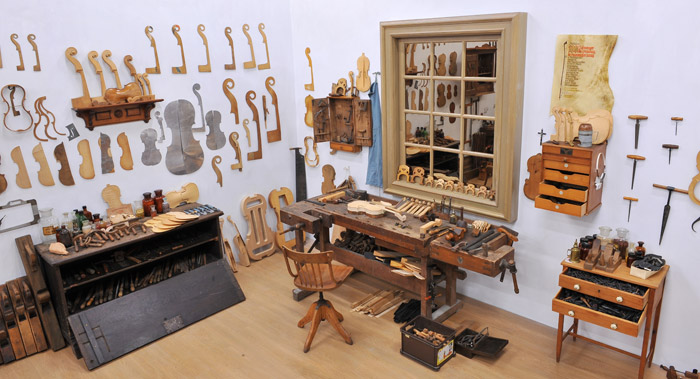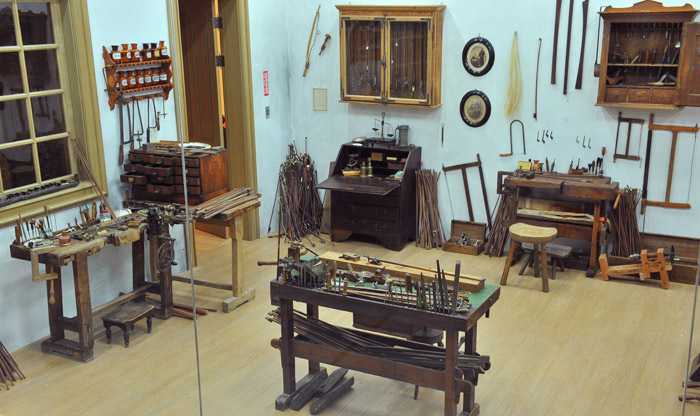Pioneering Luthiers:The Violin's Structure and the Violin Making Process
Behind all of the immensely beautiful sounds of the violin is a combination of the science of mechanics and manufacturing processes. Compared with the mechanical standard process in which violins are made in factories today, the craftsmanship that went into the pursuit of perfect sound and shape made these violins more than mere musical tools. Instead, these instruments are aesthetic works of art. This section provides a simulated representation of a century-old luthier workshop where instruments and bows were made, dissecting the methods and process of violin making, giving viewers a chance to observe it comprehensively. Here we unlock the secrets regarding what exactly about the violin that tugs at people's heartstrings, and why it has been favored by great musicians for so long. Traveling through time, one can see the plates, molds, and tools that were used to measure, cut and carve the instruments that have been left from our predecessors. Thus, the views can almost make out the silhouette of the master luthiers as they were busy making their masterpieces so many years ago.
Scarampella & Gadda workshop(1886-2008)
(Mantua, Italy)
Leicht family workshop(1896-1988)
(Hohndorf, Germany)

Prell family workshop(1898-1975)
(Markneukirchen, Germany)
